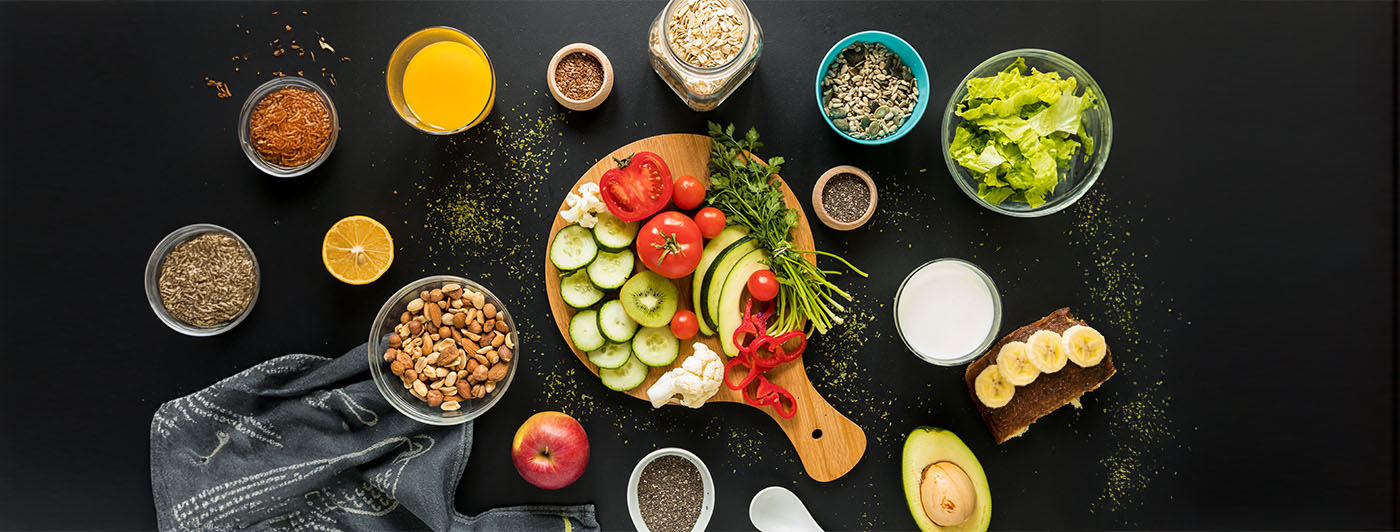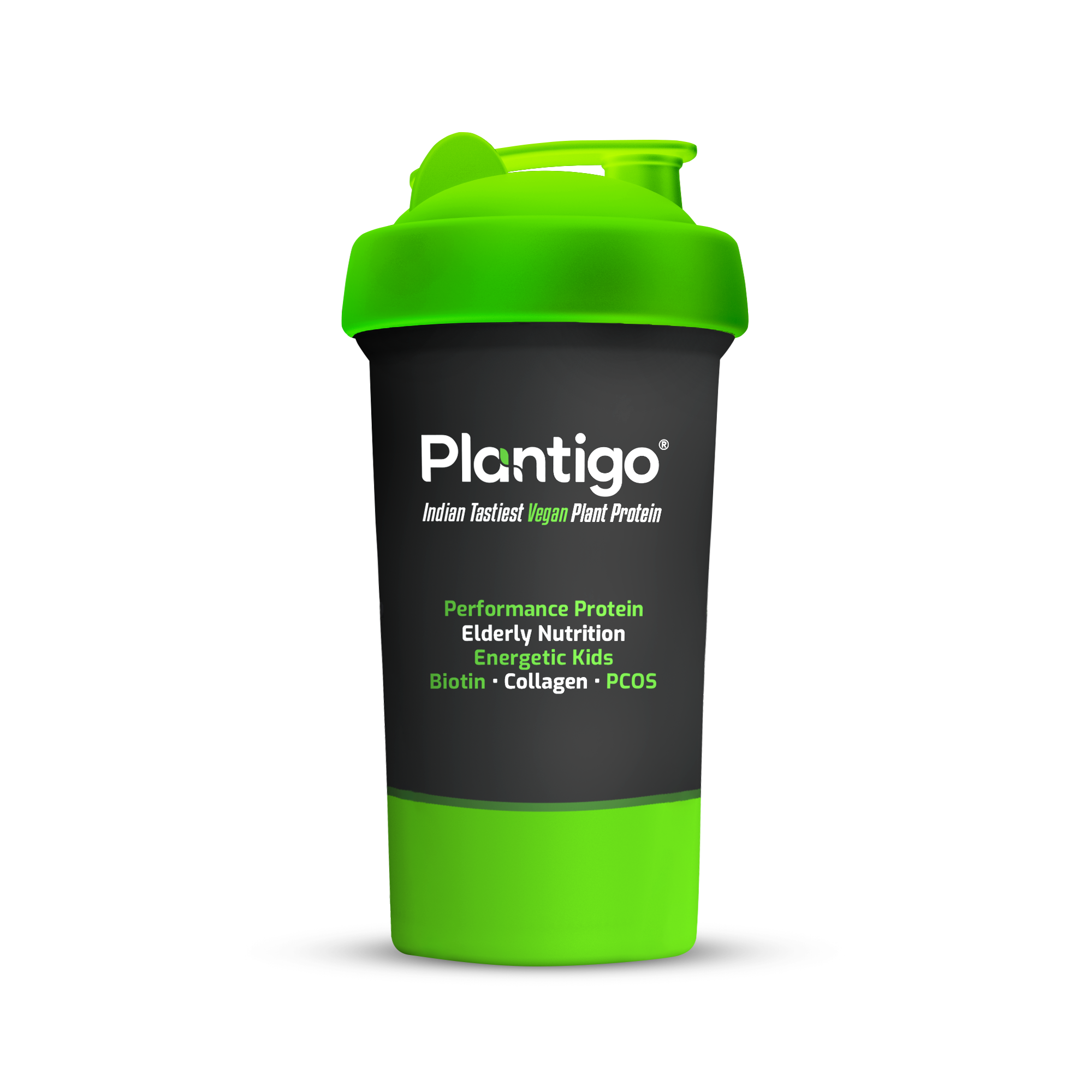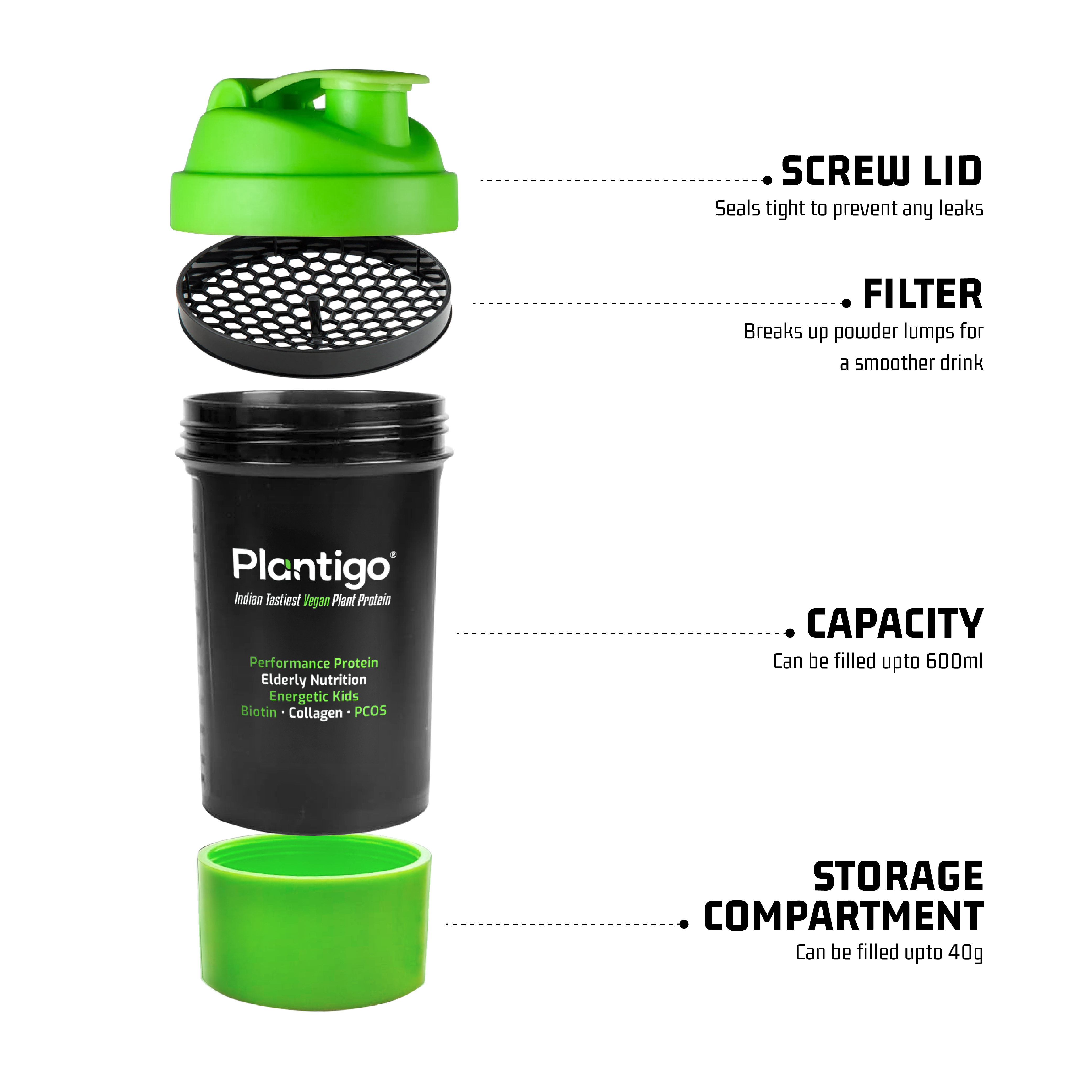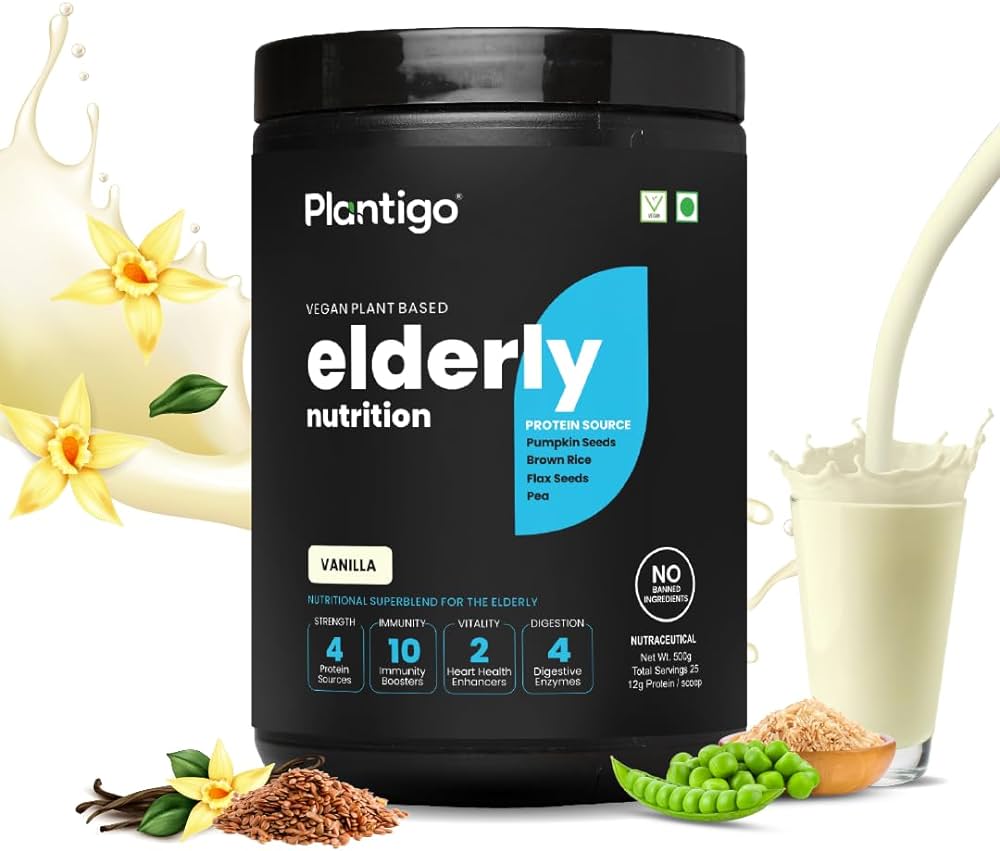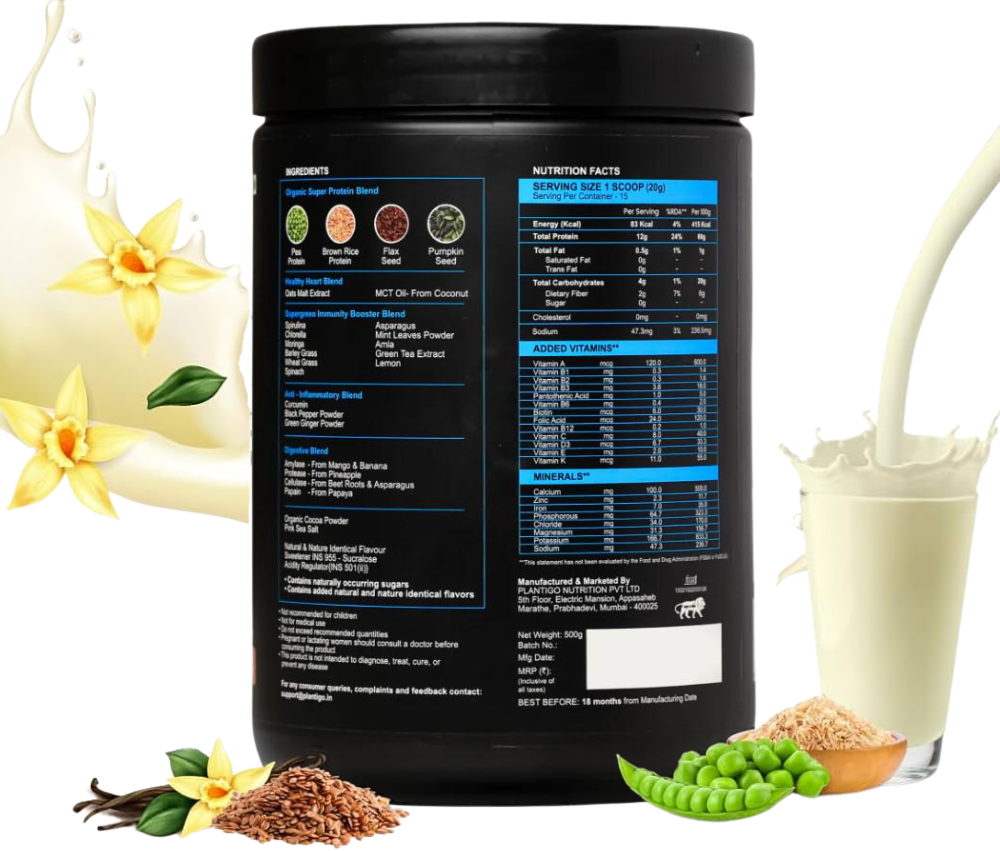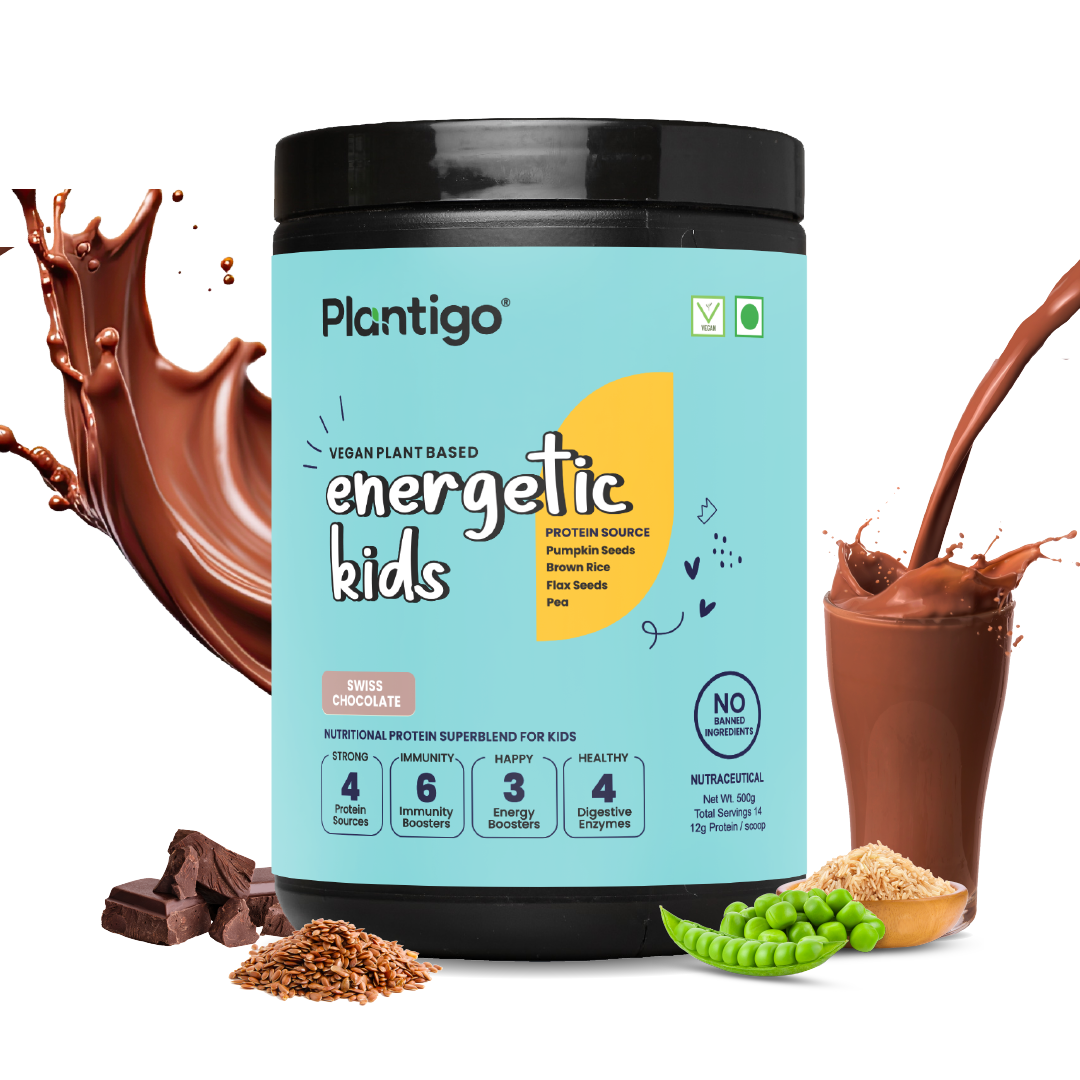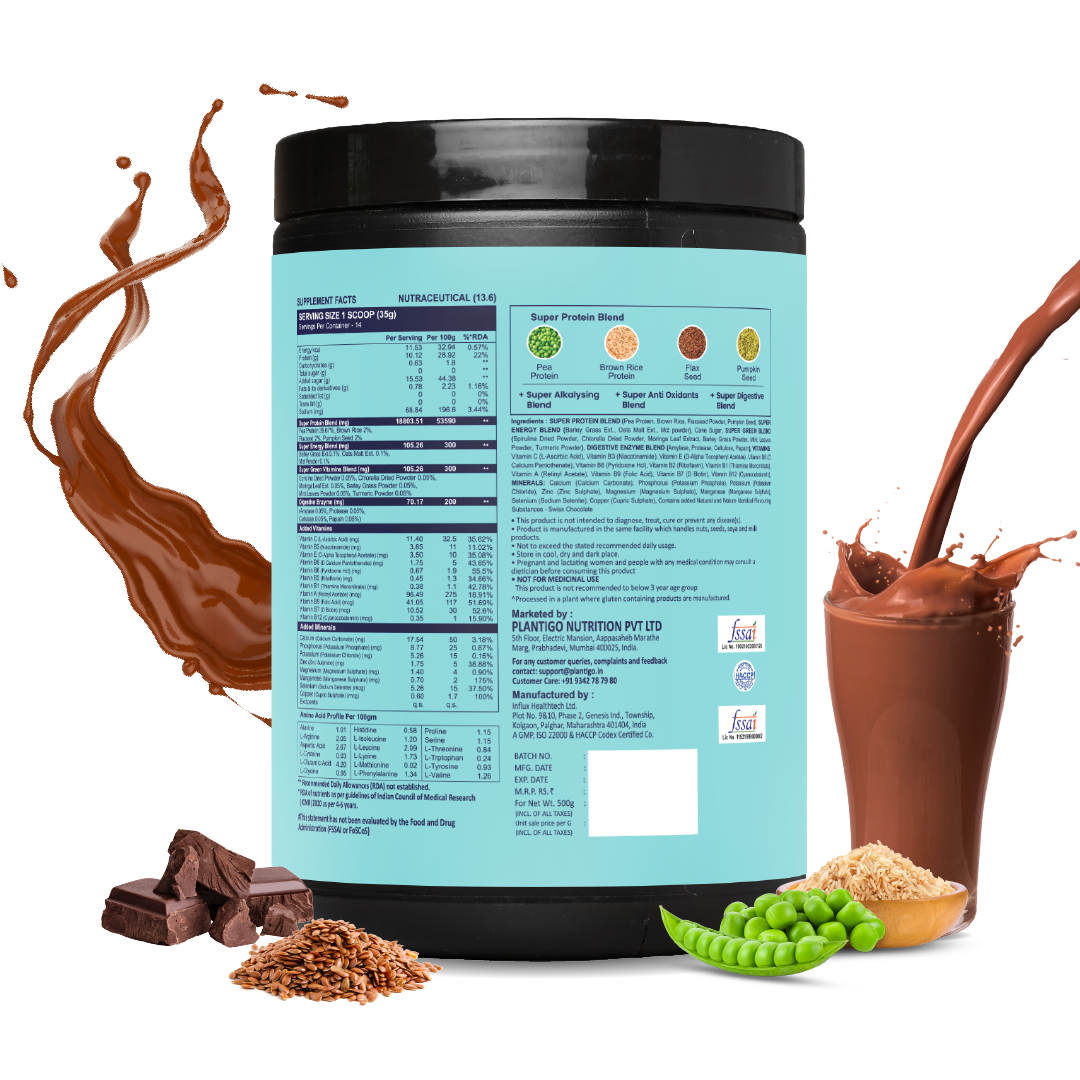Struggling to build muscle despite putting in hours at the gym? The problem might not be your workout—it could be your protein intake.
When you're chasing fitness goals, especially muscle gain, your training is only half the battle. The other half? Nutrition—and at the heart of it lies protein. Whether you’re lifting heavy, training consistently, or switching to a plant-based diet, understanding how to calculate protein intake is absolutely essential.
But calculating the right amount of protein isn’t just about stuffing down more tofu or chugging protein shakes. It’s about aligning your protein intake with your body weight, training intensity, goals, and food preferences. Whether you're fueling up with animal protein or incorporating diverse sources of plant protein, what matters most is hitting your individual target.
Here’s the thing—get this wrong, and you may hit plateaus, feel sluggish, or miss out on real gains. Get it right, and you’ll fuel faster recovery, lean muscle growth, and lasting performance.
In this guide, we’ll walk you through the step-by-step method of how to calculate protein intake for muscle gain, bust myths, and show how even a plant-forward diet can meet your goals—without compromising on health or taste.
What Does Protein Really Do for Muscle Growth?
Protein is made up of amino acids—often referred to as the "building blocks of life." When you strength-train or do resistance workouts, your muscle fibers suffer tiny tears. It’s during the recovery process that your body uses protein to repair and build new muscle tissue, making your muscles stronger and denser.
But there’s a catch: if your protein intake is insufficient, your body won’t have the resources it needs for muscle synthesis, no matter how hard you train.
That’s why it’s crucial to understand how to calculate protein intake based on your body and activity level.

Step-by-Step Guide: How to Calculate Protein Intake
Step 1: Know Your Body Weight (in kg)
The foundation of calculating protein is your body weight. Most scientific recommendations express protein needs as grams per kilogram of body weight. If you’re used to measuring in pounds, convert your weight to kilograms first.
Formula:
Weight in kg = Weight in pounds ÷ 2.2
For example:
180 lbs ÷ 2.2 = 81.8 kg
Step 2: Determine Your Activity Level
Different activity levels demand different protein needs. Here’s a quick breakdown:
-
Sedentary lifestyle: 0.8g per kg
-
Lightly active (few workouts/week): 1.0g – 1.2g per kg
-
Moderately active (3–4 workouts/week): 1.4g – 1.6g per kg
-
Active (5+ strength sessions/week): 1.6g – 1.8g per kg
-
Very active (daily intense training or athlete-level): 1.8g – 2.2g per kg
If your goal is muscle gain, the sweet spot is typically between 1.6 to 2.2g per kg of body weight.
Step 3: Multiply and Set Your Target
Let’s say you're 82 kg and train five days a week.
Using a protein factor of 1.8g:
82 × 1.8 = 147.6g of protein per day
This is your daily protein intake target for muscle building. Knowing how to calculate protein intake gives you the clarity to make every meal count.
Can a Plant-Based Diet Support This Much Protein?
Absolutely! While animal-based protein is more commonly associated with muscle gain, a well-planned plant-based diet can also deliver. You just need to be strategic.
Combine Complementary Proteins
Plant proteins can absolutely support muscle growth and recovery. Several sources—like quinoa, buckwheat, and amaranth—are naturally complete, containing all nine essential amino acids. Others may have varying amino acid profiles, but this isn’t a drawback. Simply including a variety of foods—like dal with rice or hummus with whole-grain pita—can enhance the overall amino acid balance. While not always necessary, combining different plant proteins is a smart and effortless way to ensure optimal muscle support, and there’s no harm in doing so.
Use Convenient Tools Like Plant-Based Powders
If you're finding it hard to meet your targets through food alone, plant based protein powder can help bridge the gap. These powders offer a convenient, fast-absorbing source of protein that can be consumed post-workout or between meals.
Some are even formulated specifically as protein powder for women, with added nutrients like calcium and iron to support hormonal health and bone density.
Sample Day: Distributing 147g of Protein
Here’s a sample daily intake plan to demonstrate how to spread your protein consumption evenly:
|
Time |
Meal & Foods |
Protein (Approx.) |
|
8:00 AM |
Overnight oats with soy milk + chia seeds |
20g |
|
10:30 AM |
Smoothie with plant based protein powder |
25g |
|
1:00 PM |
Brown rice + dal + sautéed tofu |
35g |
|
4:00 PM |
Roasted edamame + fruit |
15g |
|
7:00 PM |
Quinoa + black beans + steamed greens |
30g |
|
9:00 PM |
Almond milk with flaxseeds |
5g |
|
Total |
130–150g |
It’s clear from this plan that hitting protein goals—even on a plant-forward diet—is doable.
Common Misconceptions About Protein and Muscle Gain
Myth 1: More Protein = More Muscle
Truth: Once you exceed your requirement, excess protein is stored or excreted. The focus should be on how to calculate protein intake properly—not overdoing it.
Myth 2: Only Animal Protein Builds Muscle
Truth: With careful planning and diversity, plant protein can be just as effective.
Myth 3: Timing Doesn’t Matter
Truth: Protein timing—especially post-workout—can support faster recovery and hypertrophy. Try to get 20–30g within 30–60 minutes after a workout.
Supporting Nutrients for Protein Metabolism
Protein doesn’t work in isolation. Other nutrients are essential for efficient metabolism and muscle repair:
-
Vitamin B12: Crucial for red blood cell production and energy, found in b12 foods like fortified cereals and nutritional yeast.
-
Iron & Zinc: Help carry oxygen to muscles and support tissue repair.
-
Biotin & Vitamin A: Support skin, nail, and keratin rich foods benefit hair health, especially when increasing protein intake.
-
Omega-3 fatty acids: Improve muscle recovery and reduce inflammation.
If you’re learning how to calculate protein intake for your fitness goals, don’t forget to factor in these complementary nutrients. They help ensure that the protein you consume is effectively absorbed and put to good use.
Adding Functional Foods & Habits to Your Routine
Here are some lifestyle tweaks and foods that can complement your muscle gain journey:
-
Hydration: Your muscles are mostly water. Staying hydrated improves performance and recovery.
-
Metabolism Boosting: Add drinks to lose belly fat like green tea, lemon water, or cinnamon-infused tea. These support fat loss without affecting muscle mass.
-
Chia seeds for skin and recovery: Packed with fiber, protein, and omega-3s, chia seeds help muscle recovery while benefiting skin elasticity.
When you're figuring out how to calculate protein intake for your body, don’t overlook the role these functional foods and habits play. They help your body absorb and utilize protein more efficiently while supporting overall well-being.
Recalculate Regularly as You Progress
As you build muscle and lose fat, your protein needs will evolve. Revisit how to calculate protein intake every few months:
-
Has your weight changed?
-
Have your workouts intensified?
-
Are you adding cardio or HIIT to your regimen?
A simple recalculation can help you maintain your results and avoid plateaus.
Final Thoughts
Mastering how to calculate protein intake isn’t just a nice-to-know—it’s a game-changer for sustainable fitness success. Whether you're looking to build muscle, lean out, or simply maintain your strength, knowing your exact protein needs helps you train smarter, recover faster, and perform at your best.
Curious about the best plant based protein sources? The key isn’t just one magic ingredient—it’s variety. Combine lentils, quinoa, dal, legumes, and chia seeds with a clean, well-formulated protein supplement when needed to create a powerful, balanced diet that supports your goals.
Ready to take control of your results? Start by calculating your daily protein target—and watch how small changes in your plate lead to big changes in your performance. Because when you fuel right, you grow right.
Bookmark this guide, share it with a friend, and start building your protein-powered routine today.
Frequently Asked Questions
1. How do I calculate my total protein intake?
To calculate your total protein intake, multiply your body weight in kilograms by your protein requirement, which typically ranges from 0.8 to 2.2 grams of protein per kilogram, depending on your activity level. For example, a moderately active person may need 1.2 to 1.5 g/kg of body weight. Add up all the grams of protein from the food and supplements you consume in a day to get your total daily protein intake.
2. How much protein for a 70 kg man?
A 70 kg man typically needs between 56 grams to 154 grams of protein per day, depending on his lifestyle.
-
Sedentary: ~56g (0.8g/kg)
-
Moderately active: ~84g (1.2g/kg)
-
Bodybuilding or intense workouts: ~126–154g (1.8–2.2g/kg)
To find the exact requirement, use your activity level to choose the right multiplier per kg of body weight.
3. How do you calculate protein quantity?
To calculate protein quantity, read the nutrition labels of the food you eat. Most labels show the amount of protein per serving. You can also use nutrition tracking apps or food databases to estimate the protein content in home-cooked or whole foods. Add up the protein from all meals and snacks to determine your daily total.
4. How is total protein calculated?
Total protein is calculated by summing up the protein content of all foods and supplements consumed in a day. This includes protein from plant-based sources like legumes, grains, and nuts, as well as animal sources like dairy, eggs, meat, or protein powders. Many use a food diary or macro tracker app for accuracy.
5. How do you calculate protein intake in kg?
To calculate protein intake per kg of body weight, divide your total daily protein consumption in grams by your body weight in kilograms.
Formula: Protein intake (g/kg) = Total protein consumed (g) ÷ Body weight (kg)
For example, if you eat 90 grams of protein and weigh 70 kg, your intake is 1.29 g/kg.




